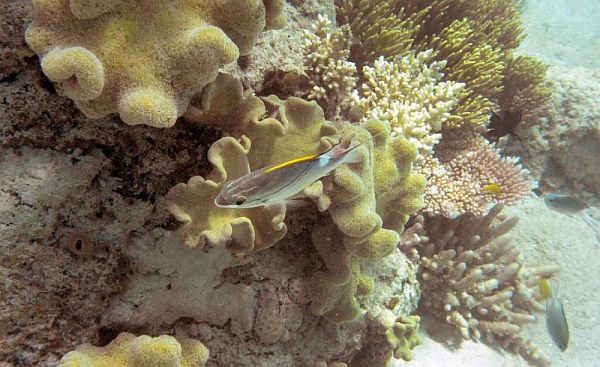
Last year, the El Niño helped kill off two-thirds of shallow-water corals in the northern part of Australia’s Great Barrier Reef, and an unprecedented second year of bleaching is underway now.
AFP
PARIS — A spike in water temperature lasting only days bleached all the coral in a South China Sea atoll, and killed 40 percent of the tiny organisms within weeks, researchers reported Thursday.
The six degree–Celsius surge at Dongsha Atoll in June 2015 was produced by a perfect storm of factors: the time of year, a record El Niño and a rare lull in local winds and waves.
Open ocean water temperature in the region was two Celsius above normal.
The dramatic die-off shows what can happen to shallow-water reefs when global warming is amplified by short-term weather, the scientists warned.
“The concern is that with a two Celsius warming of the oceans, these weather anomalies will happen more often,” said Anne Cohen, a researcher at the Woods Hole Oceanographic Institution in Massachusetts and co-author of a study published in the journal Scientific Reports.
“It could be every couple of years, even every year — and completely knock out the reefs,” Cohen told AFP.
Bleached coral is susceptible to disease, and needs time to recover — one or more decades, depending on the species.
So far, Earth’s surface atmosphere has warmed up by one Celsius compared to late-19th century levels, with ocean temperatures climbing more slowly.
Already today, coral reefs around the world are declining or dying off at an alarming pace.
Last year, the 2015–16 El Niño helped kill off two-thirds of shallow-water corals in the northern part of Australia’s 2,300-kilometer-long Great Barrier Reef.
An unprecedented second year of bleaching is underway now.
Like a hot tub
El Niños are natural climate cycles in the Pacific Ocean, every few years, that produce drier air and warmer ocean water at the surface in equatorial Asia.
After completing a routine survey of coral extent at the Dongsha Atoll in 2015, the scientists went to recover instruments from the water.
“That’s when we saw that all the coral had turned white,” said Cohen.
Under normal conditions, the reef is regularly flushed with cool water from the open ocean, she explained.
But with no wind or waves, “the water just sat there in the Sun — it was like a hot tub.”
Returning several weeks later, the scientists removed samples from the reefs to see whether the atoll’s corals had endured, and survived, bleaching in the past.
The cores revealed three previous bouts going back to 1983 — but none affecting more than 50 percent of the corals.
Coral reefs are incubators and habitat for thousands of marine species, and vital to the livelihoods of half-a-billion people around the world./AFP
Disclaimer: The comments uploaded on this site do not necessarily represent or reflect the views of management and owner of Cebudailynews. We reserve the right to exclude comments that we deem to be inconsistent with our editorial standards.
